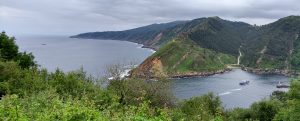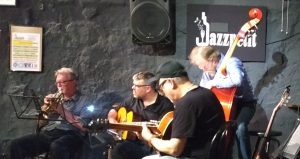
In early June our good friend Jerry came to visit. He’s such a great friend, he even brought along my stick bass – just in case we had a chance to do some jamming. Jerry’s plan was to visit miscellaneous points of interest in Barcelona/Catalonia, and to take a road trip — somewhere that he might be able to find a decent meal.
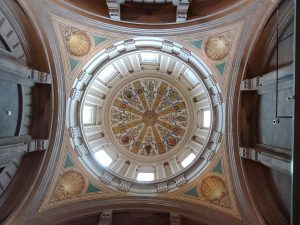
Like many folks, Jerry prefers to use credit cards and carry only a minimum of cash. He even told me that before this visit he had never used an ATM to withdraw cash – thus had not tested out the process before leaving the states. Dear readers – if you visit us here, please don’t make this mistake. If you get very far off the main tourist trails here in Spain, there are many places that don’t accept credit cards – so remember to bring some cash. And also, test the ATM cash withdrawal process before leaving the US — it can be difficult to correct any pin issues that may arise when you are out of the country. (For some reason, US banking institutions seem to be quite leery of changing the credit card pin for some random guy who is calling from Barcelona … )
The day after Jerry arrived we visited the Museu Nacional d’Art de Catalunya – a museum featuring Catalonian artists over the past 10 centuries. Although there are still numerous art museums we have yet to visit here in Barcelona, this one is my favorite so far. To stave off the hunger generated by viewing all this art, we strolled to a nearby area we know affectionately as Pinxto street. Here is a link to one of our favorite places along Carrer de Blai, but there a lot of good places to choose from.
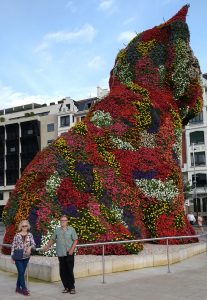
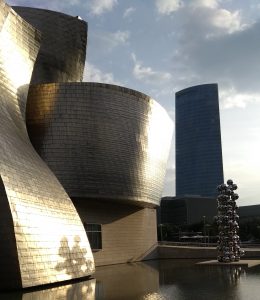
On a Thursday morning, we boarded the 07:30am train for the 6.5 hour ride from Barcelona to Bilbao, Pais Vasco (Basque Country). This is not a high-speed train, but it is still pretty decent – not too many stops, and requires about the same amount of time as if one were to take the toll roads from Barcelona straight through to Bilbao.
Once in Bilbao, we walked to the old part of town, snacked on pinxtos and txakoli , checked in to our pensíon, then started exploring. First was the Bilboko Euskal Museoa, the Basque history museum. Not much signage in English, but we understood enough to appreciate the displays on both fishing and shepherding – with both occupations playing an important role in the history of the area. There was even a display on the impact that Basque shepherds played on the sheep raising industry in the western United States. Next, a stroll down the riverwalk to the Guggenheim Museum – just to gaze on the sculptures in and around the grounds.
On Friday the plan was to do a bit of sightseeing, then take a bus to San Sebastian (Donostia).
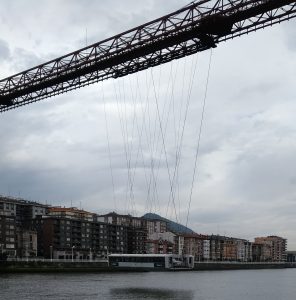
We took the metro down the river to Getxo where we could see the UNESCO listed Vizcaya Bridge. First built in the 1890s, this is a great example of a “ferry bridge” where you walk or drive onto the ferry pod which is then transported from one side to the other.
More pinxtos at La Riberia Gastro Market – original location of the Bilbao city market (for the past 800 years or so anyway), and then a 90 minute bus ride to Donostia (aka San Sebastian).
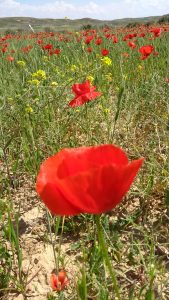
Our 3 days and 2 nights here included a hike along the wooded shoreline east of Donostia, great food, lounging on the beach, great pinxtos, a really odd film (Snowy Bing Bongs Across the North Star Combat Zone) at the city cultural center , hiking the fortified promontory overlooking the Bay of Biscay – and some really great food.
We caught the 2pm train back to Barcelona, and arrived in time for the Jazz Manouche Jam at Jazzpetit that evening.
